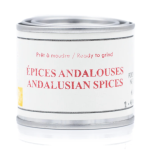
Does True Cinnamon Exist?
If cassia and cinnamon were running for president, we could frame this as a debate. However, good cooks don’t need to choose—they can and do use both cassia and cinnamon. And thanks to the work of our friends at Épices de Cru in Montreal, we’ve tracked down amazing examples of each; the best of the best of the best of Ceylon cinnamon and Sumatra cassia.
Philippe de Vienne from Épices de Cru explains some of the confusion: “The main difference between the two closely related trees is the volatile oil in the two spices. Typically, Cassia contains only one volatile oil and flavour, whereas true cinnamon has four, including the one found in cassia. The difference makes cassia hot and sweet with a single flavour. The combination found in cinnamon gives a more citrusy, fresh and complex aroma as the single volatile oil that gives cassia its warmth is found in lesser concentration. That hardly makes one superior to the other. Great cassia is as good as great cinnamon. The two spices have distinct personalities.”
What is the difference between Cassia and Cinnamon?
Free choice is the order of the day here. As Philippe de Vienne says, “You may have a favorite or love both equally.” Interestingly, while cassia became the one most commonly used in the U.S., Ceylon cinnamon has long been the mainstream choice in Mexico. This is one reason that Mexican chocolate—typically spiced with cinnamon—is both so exotic and so appealing to interested American palates. Mexico is the biggest single consumer of Ceylon cinnamon. It’s used there in moles, flans, and hundreds of other dishes. While you can find it in the US, it’s generally little known. Cassia is used a lot in southeast Asia and the Middle East. Turkish cuisine uses it with lamb; it’s used in Chinese five spice, and in traditional Sumatran curries. When we buy “cinnamon” in the grocery store in the U.S. it’s nearly always actually cassia. In Asia, North Africa and the Middle East both are used regularly. Ras el hanout, Berbere and other classic spice blends include some of each.
Let’s start with the Ceylon, or Sri Lanka, cinnamon.
As Philippe explains, “This cinnamon comes from our friends Sanath and Deepa. Sanath’s family has been growing cinnamon for as long as they can remember. Their plantation is situated in the village of Cinnamon (I’m not making this up), 50 or so kilometers south of the capital Colombo. The plantations are a few hundred yards from the beach which make the soil sandy and well-drained. The microclimate is constantly hot. All essential conditions for growing the finest cinnamon. After that the family tradition of excellence kicks in. Cinnamon attains its best balance of the different flavours when it is 4-6 years old. At harvest, quills are scraped clean, peeled from the wood and let to dry in the shade. True cinnamon quills are always made up of several thin barks hand rolled together. This process demands great skill; cinnamon quill makers are in high demand and earn a very good living. This makes distinguishing cassia from cinnamon very easy as cassia is always made of a single thicker bark. Then cinnamon is graded in five categories ranging from 0 to 00000 (five zeroes or H5). The finest 00000 with delicate and very thin and pale bark is called 00000 Alba. Our friends then further select from this grade for our orders.”
No one else, it turns out, as has ever asked Sanath and Deepa for this The Sri Lanka cinnamon is soft—you can crush it with your fingers if you want. You’ll see it in Zingerman’s Deli in thin, 12 to 14-inch sticks that were so carefully rolled back in Sri Lanka. Lamb chops spiced with freshly ground cinnamon and a touch of sea salt, then grilled, are amazing. Same could be said for pork chops or chicken. Rice pudding, kebabs, rice dishes of all sorts. Add a bit to fruit salad. It’s great really in almost any sweets where you want a subtler, softer, gentler flavor.
The Cinnamon You’re Used To But, Different
The cassia, of course, is equally amazing. “The cassia that we’re getting comes from the Minangkabau highlands of Sumatra.” The trees are beautiful, huge. Sixty feet tall and about five feet across. Philippe and Ethne de Vienne inquired into buying the bark. It was quite the negotiation. “They said ‘Yeah, we have thirty-year old trees.’ We said, ‘OK, we’re very interested. They said, ‘Oh no! We don’t sell those!’ We said to the mama, ‘We’re really interested. We’ll pay more for it.’ She said, ‘No! It’s my thirty-year old tree. We don’t sell those. No one will pay what it’s worth.’ So we looked her in the eyes and we said ‘no we’ll pay!’ She proceeds to quote us a price—2 1⁄2 times the regular price for cassia. She was sure we’d never pay. But we said ‘Great! We’ll take it.’ I could see immediately that she wanted to retract the price. Then she said, ‘Well, what if I cut it and you’re not here?’ A fair question. So we said, ‘We’ll pay you half now.’ And now it’s happening!” The age of the tree is important. Whereas the Ceylon cinnamon is best at four to six years, the cassia gets better the older it gets. Getting thirty-year old trees like this is incredible. It’s like thirty-year old traditional balsamic vinegar compared to the cheap, caramel colored commercial alternatives that now fill supermarket shelves.
As Philippe explains,
“The older the tree, the higher the oil content. Bark from older trees has an intense flavour and a touch of bitterness that’s not found in younger cassia. This is not a flaw as you might think. Bitterness is essential to the taste balance of good food. Nothing balances a very sweet dessert like a hint of bitterness; think of cocoa, caramel or vanilla beans. The cassia is coming in to us in big pieces. I have a piece of bark at my house that’s about a foot long and maybe three inches in diameter. The aroma is pungent, intense; the flavor amazing. About twenty-two times more intense than anything I’ve tried elsewhere.”
Each of the two is excellent. Unlike pre-ground commercial offerings, you do have to grind these at home. Pre-grinding means that essential oils and aromas are being lost to the air. What you gain in convenience is lost many times over in taste. A small spice grinder works well. It takes no more time to do than it takes you to grind coffee beans at home. And the aromas in the kitchen while you work will be totally wonderful. To help everyone in town become familiar with the excellence of these two terrific spices, we have them both on special during December. If you’re looking at gifts for someone who likes to cook or bake, I really recommend getting them some of each so that they can experience the differences and the wonderful diversity of sweet, spicy, sensuality. Because there is no debate and we’re not voting, you don’t have to choose one over the other. You can have peace, prosperity and a really positive, enriching and educationally oriented experience in your kitchen every day.
If cassia and cinnamon were running for president, we could frame this as a debate. It probably wouldn’t be pretty. Each would argue vociferously that it was the authentic cinnamon.
Philippe de Vienne from Épices de Cru distinguishes the two: “The main difference between the two closely related trees is the volatile oil in the two spices. Typically, cassia contains only one volatile oil and flavor, whereas true cinnamon has four, including the one found in cassia. The difference makes cassia hot and sweet with a single flavor. The combination found in cinnamon gives a more citrusy, fresh and complex aroma. That hardly makes one superior to the other. The two spices have distinct personalities.”
When we buy “cinnamon” in the U.S. it’s nearly always actually cassia. To help everyone become familiar with the excellence of these two hand-selected spices by Épices de Cru we have them available for purchase at Zingerman’s Deli. If you’re looking at gifts for someone who likes to cook or bake, we recommend getting them some of each so that they can experience the differences.
![]()



